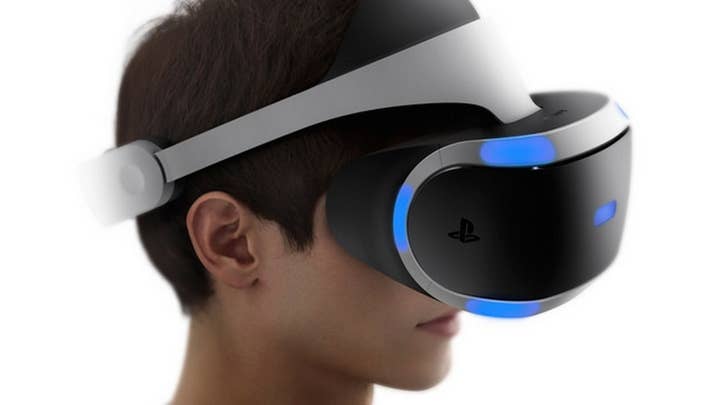PlayStation VR: Is Sony willing to be a loss leader?
With Vive and Oculus now both priced, attention turns to Sony - will PlayStation play the pricing wildcard?
HTC and Valve have finally revealed the price of the Vive VR headset: a whopping $800. Similar to when Oculus dropped its pricing bombshell, announcing a $600 price tag, reactions have been mixed, with some aghast that the headset could go for that much and others happy with the value of what Valve and HTC are offering. In fact, one of my colleagues on GamesIndustry.biz who's had ample experience playing with Vive believes the price is "totally justified."
In the end, the price is not all that different from Oculus because Vive comes with base stations and controllers while Oculus only comes packed with an Xbox controller. "The $800 Vive price is in line with industry expectations based on the Vive hardware components," EEDAR's Patrick Walker tells me. "We have long predicted that high hardware costs would slow the mass market adoption of VR and the Vive price announcement is in line with that. The interesting news to me is that Vive will be launching with a VR experience that includes motion controls, as this creates launch differentiation between the two products. At this point, the three premium VR products appear to have different potential strengths at launch. It is important to emphasize the word potential because there is still a lot of critical information to be revealed before launch."
While there's a marked difference between what comes in an Oculus package and what comes with the Vive, price is price and that's the first thing consumers will notice, so the upper hand still goes to Oculus says Wedbush analyst Michael Pachter, who added that Sony has a big chance to undercut them both. "$800 is more than $600, even with hand controls, so Oculus has an advantage. The ball is in Sony's court, and they can steal the spotlight with a sub-$500 price point, if they can afford it. Content and quality matter, but remember how the PS3 stumbled at $600 compared to the 360 at $400," Pachter says.
"The higher price point of the Oculus and the Vive opens up the opportunity for Sony to have a clear, early market advantage if they deliver with a high quality consumer experience, strong catalogue, and lower headset price"
Patrick Walker
Walker agrees that Sony could be in a great position, but it all depends on how much financial pain PlayStation is willing to endure. "The similarity in pricing between Vive (with motion controls) and Oculus (w/o motion controls) suggests that there is a certain price threshold to deliver premium VR. Assuming PlayStation VR delivers a similar quality experience, the pricing wildcard is how much Sony can lower price through a combination of willingness to be a loss leader by selling the hardware below cost and how much they can leverage their robust hardware manufacturing supply chain," he says.
All that said, when high-end gamers are already paying hundreds, if not thousands, on VR headsets and PC rigs, spending $200 more on Vive is not a big deal, points out DFC Intelligence's David Cole. "The Vive is looking like more of a niche product compared to Rift. However, at this early stage that could work well because gamers are likely to already have the hardware, and of course there will be some that have to get the latest and the greatest tech," he notes.
Regardless of the price of the VR platform, as with any hardware, the software that's playable on it is paramount to its success or failure, and "Oculus has thus far shown the most robust software line-up of diverse games made by experienced publishers," says Walker. It's also important to remember that Sony will have the installed base advantage at launch with the PS4, and Sony's worldwide software studio system excels at making solid games.
"The higher price point of the Oculus and the Vive opens up the opportunity for Sony to have a clear, early market advantage if they deliver with a high quality consumer experience, strong catalogue, and lower headset price. However, that is a lot of ifs and less details are known about the PlayStation VR than the other units," adds Walker.
IDC research director Lewis Ward is confident that in the US 1-2 million gamers will own a Vive, Oculus or PS VR head-mounted display by the end of the year. "I'm fairly confident that the PS VR bundle will be at most the same price as Oculus," he predicts.
"The real wild card is the games catalog that Vive will bring to market before the end of this year. I'm just not sure how many truly compelling exclusives will be available for Vive and there will have to be a handful of them to justify the $200 price premium. Our survey data show that it's hardcore gamers - younger males who play over 15 hours a week - that are most interested in VR headsets from a consumer angle at least, and the plain fact is that hardcore-leaning titles will be few and far between at launch. HTC and Valve better have a few AAA surprises up their sleeves in April or Vive could definitely limp out of the gate."
Sony hasn't officially announced its VR launch plans but it's been rumored that PlayStation VR will ship in the fall, which could make Sony's E3 media briefing the likely time for a price and date announcement.









